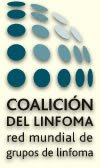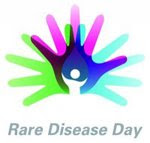
Missed Nursing Care
Background
Nurses have a central role in patient safety, as discussed in a previous Patient Safety Primer. There is a well-established link between the adequacy of nurse staffing in hospitals and patient outcomes such as mortality and failure-to-rescue. However, the pathway that connects nurse staffing with patient outcomes is less well understood. One proposed pathway is the amount of surveillance, or ongoing assessment and reassessment of patient condition, that can be provided under a given staffing structure. A related proposed pathway is missed nursing care.
Missed nursing care is a subset of the category known as error of omission. It refers to needed nursing care that is delayed, partially completed, or not completed at all. Missed nursing care is problematic because nurses coordinate, provide, and evaluate many interventions prescribed by others to treat illness in hospitalized patients. Moreover, nurses also plan, deliver, and evaluate nurse-initiated care to manage patients' symptoms and responses to care, and to promote health and healing. Thus missed nursing care not only constitutes a form of medical error that may affect safety, but has been deemed to be a unique type of medical underuse.
Following Donabedian's structure–process–outcome framework, Kalisch and colleagues developed a conceptual model of missed nursing care (also described by others as "unfinished nursing care" and "care left undone"). The structural factors contributing to missed nursing care include: labor resources (number and types of nursing staff, competency level of nursing staff, education and experience of staff; material resources (availability of necessary medications, supplies, and equipment); and teamwork and communication (among the patient care team members, between nurses and physicians, between nurses and support staff). When one or more of these resources is missing from an organization or during a work period, nurses need to prioritize their care activities and the stage is set for nursing care to be delayed or omitted.
In Kalisch's model, a nurse faced with restricted resources uses the nursing process to determine clinical priorities and make decisions about whether to delay or omit certain aspects of care. The decision process is influenced by four individual-level factors: the nurse's perceptions of team or group norms; the nurse's judgment about the importance of various aspects of care relative to the conditions of multiple patients the nurse may be responsible for; the nurse's values, attitudes, and beliefs; and the nurse's usual practice. The outcome of the clinical prioritization process in the face of resource or time scarcity is missed nursing care. An AHRQ WebM&M commentary highlights the potentially catastrophic consequences of the competing demands nurses may face in executing needed care.
The more routine consequences of missed nursing care can include delayed or omitted medications or treatments; complications such as atelectasis, deconditioning, pressure ulcers, falls, ventilator-associated pneumonia, or other nosocomial infections; increased length of stay; and decreased patient satisfaction. Kalisch's model also implies that organizational conditions can promote normalization of deviance—even when missed nursing care does not result in observable adverse effects. The experience of working under time and resource pressure can unconsciously reinforce the acceptability of delaying or omitting care, leading to missed care becoming routine.
Evidence
The prevalence of missed nursing care appears to be high, both in the United States and internationally. Data for missed care measures are obtained by nursing self-report and by patient report. In a systematic review of 42 studies, 55%–98% of nurse respondents reported missing one or more items of required care during the time of assessment (frequently the last shift worked). Investigators concluded the activities most frequently missed are those related to emotional and psychological needs, rather than those related to physiologic needs (however, findings vary depending on the measurement approach). For example, one measurement approach found that ambulation, turning, and mouth care were among the most frequently missed aspects of care. Another approach found surveillance activities were most frequently missed.
Although individual nurse-level factors are included in the conceptual model for missed nursing care, these factors have not proven to be associated with missed care. The only exception is that nurses report more missed care than do nursing assistants. On the other hand, organizational factors such as patient safety climate, teamwork, and resource adequacy are associated with missed nursing care. In one large review, missed nursing care was correlated with quality of care and adverse events and had a moderate effect on patient outcomes. Statistically significant impacts were demonstrated on medication errors, patient falls, nosocomial infections, pressure ulcers, mortality, and patient satisfaction.
Units with better staffing appear to have lower rates of missed nursing care. This finding suggests that improving staffing will reduce missed nursing care, but this hypothesis has not yet been tested in an intervention study. A study of an intra-nursing teamwork training intervention showed improved short-term teamwork and less missed care at 2 months post-intervention. Though this intervention is potentially promising, there was no longer-term evaluation of sustainability and no testing of patient outcomes.
Prevention
The most consistent predictors of missed nursing care are staffing levels, work environment, and teamwork, though few interventions to address missed care have been evaluated. Thus missed nursing care can today be best understood as a common safety and quality threat for which there is not yet strong evidence regarding effective solutions. However, several conclusions can be drawn based upon the predictors of missed nursing care.
First, missed nursing care is primarily a problem of time pressure and competing demands, and adequate nurse staffing is needed to prevent it. Evaluation of organizational nurse staffing plans should include not just the average needs of nursing units, but also careful assessment of how frequently surges in demand or patient complexity affect the adequacy of staffing. Creativity and careful analysis may be required to develop mechanisms to nimbly deploy appropriately skilled nursing staff to clinical areas experiencing an influx of admissions, unexpectedly high numbers of complex patients, or unusually depleted staff.
Second, organizational and unit culture influence missed nursing care. Improvements in the work environment, unit safety climate, organizational culture, and teamwork skills should reduce the pressures that lead to missed nursing care. Qualitative research has found that adaptable teams can help mitigate missed care. In times of resource pressures and scarcity, such teams tend to orient themselves toward caring for the whole group of patients, mostly by assisting each other to complete needed care rather than focusing only on their own patient assignments. Cultivating cross-monitoring and cooperative problem-solving skills among staff may decrease the frequency of missed nursing care.
Third, the organization of nursing work and the organization of the supply chain that supports nursing work may contribute to preventing missed care. A well-organized, reliable supply chain for medications, clinical supplies, and equipment may contribute to nurses' capacity to complete all required care. Some authors suggest that moderate or radical rethinking of responsibilities may be required in nursing to meet the needs of patients and the profession. Specific to preventing missed nursing care, ambulation and turning—two aspects of care that are frequently missed—may be best addressed by reconfiguration of the medical–surgical nursing team to include full-time ambulation and turning assistants to ensure that patients are assisted to the bathroom and turned or repositioned every 2 hours. This has not been tested, but it might be an effective component of programs to eliminate missed nursing care.
Consideration of all of the above factors is likely to result in improved work environments for nurses, which may augment patient outcomes by enhancing teamwork and reducing time pressure, cognitive load, and burnout. Indeed, results from a study of Pennsylvania hospitals suggest that more than 30% of nurses had high burnout scores, and higher burnout among nursing staff may explain the relationship between poorer nurse staffing and increased nosocomial infection rates. Several investigators suggest that addressing work environment issues and burnout among providers are essential to achieving safety, quality, and value in health care.
Current Context
Missed nursing care is a common and potentially dangerous medical error that has received limited attention. Considerable organizational attention, quality improvement, and safety research are needed to develop effective interventions to address this safety hazard.
Nurses have a central role in patient safety, as discussed in a previous Patient Safety Primer. There is a well-established link between the adequacy of nurse staffing in hospitals and patient outcomes such as mortality and failure-to-rescue. However, the pathway that connects nurse staffing with patient outcomes is less well understood. One proposed pathway is the amount of surveillance, or ongoing assessment and reassessment of patient condition, that can be provided under a given staffing structure. A related proposed pathway is missed nursing care.
Missed nursing care is a subset of the category known as error of omission. It refers to needed nursing care that is delayed, partially completed, or not completed at all. Missed nursing care is problematic because nurses coordinate, provide, and evaluate many interventions prescribed by others to treat illness in hospitalized patients. Moreover, nurses also plan, deliver, and evaluate nurse-initiated care to manage patients' symptoms and responses to care, and to promote health and healing. Thus missed nursing care not only constitutes a form of medical error that may affect safety, but has been deemed to be a unique type of medical underuse.
Following Donabedian's structure–process–outcome framework, Kalisch and colleagues developed a conceptual model of missed nursing care (also described by others as "unfinished nursing care" and "care left undone"). The structural factors contributing to missed nursing care include: labor resources (number and types of nursing staff, competency level of nursing staff, education and experience of staff; material resources (availability of necessary medications, supplies, and equipment); and teamwork and communication (among the patient care team members, between nurses and physicians, between nurses and support staff). When one or more of these resources is missing from an organization or during a work period, nurses need to prioritize their care activities and the stage is set for nursing care to be delayed or omitted.
In Kalisch's model, a nurse faced with restricted resources uses the nursing process to determine clinical priorities and make decisions about whether to delay or omit certain aspects of care. The decision process is influenced by four individual-level factors: the nurse's perceptions of team or group norms; the nurse's judgment about the importance of various aspects of care relative to the conditions of multiple patients the nurse may be responsible for; the nurse's values, attitudes, and beliefs; and the nurse's usual practice. The outcome of the clinical prioritization process in the face of resource or time scarcity is missed nursing care. An AHRQ WebM&M commentary highlights the potentially catastrophic consequences of the competing demands nurses may face in executing needed care.
The more routine consequences of missed nursing care can include delayed or omitted medications or treatments; complications such as atelectasis, deconditioning, pressure ulcers, falls, ventilator-associated pneumonia, or other nosocomial infections; increased length of stay; and decreased patient satisfaction. Kalisch's model also implies that organizational conditions can promote normalization of deviance—even when missed nursing care does not result in observable adverse effects. The experience of working under time and resource pressure can unconsciously reinforce the acceptability of delaying or omitting care, leading to missed care becoming routine.
Evidence
The prevalence of missed nursing care appears to be high, both in the United States and internationally. Data for missed care measures are obtained by nursing self-report and by patient report. In a systematic review of 42 studies, 55%–98% of nurse respondents reported missing one or more items of required care during the time of assessment (frequently the last shift worked). Investigators concluded the activities most frequently missed are those related to emotional and psychological needs, rather than those related to physiologic needs (however, findings vary depending on the measurement approach). For example, one measurement approach found that ambulation, turning, and mouth care were among the most frequently missed aspects of care. Another approach found surveillance activities were most frequently missed.
Although individual nurse-level factors are included in the conceptual model for missed nursing care, these factors have not proven to be associated with missed care. The only exception is that nurses report more missed care than do nursing assistants. On the other hand, organizational factors such as patient safety climate, teamwork, and resource adequacy are associated with missed nursing care. In one large review, missed nursing care was correlated with quality of care and adverse events and had a moderate effect on patient outcomes. Statistically significant impacts were demonstrated on medication errors, patient falls, nosocomial infections, pressure ulcers, mortality, and patient satisfaction.
Units with better staffing appear to have lower rates of missed nursing care. This finding suggests that improving staffing will reduce missed nursing care, but this hypothesis has not yet been tested in an intervention study. A study of an intra-nursing teamwork training intervention showed improved short-term teamwork and less missed care at 2 months post-intervention. Though this intervention is potentially promising, there was no longer-term evaluation of sustainability and no testing of patient outcomes.
Prevention
The most consistent predictors of missed nursing care are staffing levels, work environment, and teamwork, though few interventions to address missed care have been evaluated. Thus missed nursing care can today be best understood as a common safety and quality threat for which there is not yet strong evidence regarding effective solutions. However, several conclusions can be drawn based upon the predictors of missed nursing care.
First, missed nursing care is primarily a problem of time pressure and competing demands, and adequate nurse staffing is needed to prevent it. Evaluation of organizational nurse staffing plans should include not just the average needs of nursing units, but also careful assessment of how frequently surges in demand or patient complexity affect the adequacy of staffing. Creativity and careful analysis may be required to develop mechanisms to nimbly deploy appropriately skilled nursing staff to clinical areas experiencing an influx of admissions, unexpectedly high numbers of complex patients, or unusually depleted staff.
Second, organizational and unit culture influence missed nursing care. Improvements in the work environment, unit safety climate, organizational culture, and teamwork skills should reduce the pressures that lead to missed nursing care. Qualitative research has found that adaptable teams can help mitigate missed care. In times of resource pressures and scarcity, such teams tend to orient themselves toward caring for the whole group of patients, mostly by assisting each other to complete needed care rather than focusing only on their own patient assignments. Cultivating cross-monitoring and cooperative problem-solving skills among staff may decrease the frequency of missed nursing care.
Third, the organization of nursing work and the organization of the supply chain that supports nursing work may contribute to preventing missed care. A well-organized, reliable supply chain for medications, clinical supplies, and equipment may contribute to nurses' capacity to complete all required care. Some authors suggest that moderate or radical rethinking of responsibilities may be required in nursing to meet the needs of patients and the profession. Specific to preventing missed nursing care, ambulation and turning—two aspects of care that are frequently missed—may be best addressed by reconfiguration of the medical–surgical nursing team to include full-time ambulation and turning assistants to ensure that patients are assisted to the bathroom and turned or repositioned every 2 hours. This has not been tested, but it might be an effective component of programs to eliminate missed nursing care.
Consideration of all of the above factors is likely to result in improved work environments for nurses, which may augment patient outcomes by enhancing teamwork and reducing time pressure, cognitive load, and burnout. Indeed, results from a study of Pennsylvania hospitals suggest that more than 30% of nurses had high burnout scores, and higher burnout among nursing staff may explain the relationship between poorer nurse staffing and increased nosocomial infection rates. Several investigators suggest that addressing work environment issues and burnout among providers are essential to achieving safety, quality, and value in health care.
Current Context
Missed nursing care is a common and potentially dangerous medical error that has received limited attention. Considerable organizational attention, quality improvement, and safety research are needed to develop effective interventions to address this safety hazard.
What's New in Missed Nursing Care on AHRQ PSNet


STUDY
Effects of patient safety culture interventions on incident reporting in general practice: a cluster randomised trial.
Verbakel NJ, Langelaan M, Verheij TJM, Wagner C, Zwart DLM. Br J Gen Pract. 2015;65:e319-e329.
 STUDY
STUDY
Junior doctors' views on reporting concerns about patient safety: a qualitative study.
Hooper P, Kocman D, Carr S, Tarrant C. Postgrad Med J. 2015;91:251-256.
 STUDY
STUDY
Call-shift fatigue and use of countermeasures and avoidance strategies by certified registered nurse anesthetists: a national survey.
Domen R, Connelly CD, Spence D. AANA J. 2015;83:123-131.
 REVIEW
REVIEW
Teamwork, communication and safety climate: a systematic review of interventions to improve surgical culture.
Sacks GD, Shannon EM, Dawes AJ, et al. BMJ Qual Saf. 2015 May 22; [Epub ahead of print].
 STUDY
STUDY
Does employee safety matter for patients too? Employee safety climate and patient safety culture in health care.
Mohr DC, Eaton JL, McPhaul KM, Hodgson MJ. J Patient Saf. 2015 Apr 22; [Epub ahead of print].
 COMMENTARY
COMMENTARY
Safety culture and care: a program to prevent surgical errors.
Hemingway MW, O'Malley C, Silvestri S. AORN J. 2015;101:404-415.
 STUDY
STUDY
Developing person-centred analysis of harm in a paediatric hospital: a quality improvement report.
Lachman P, Linkson L, Evans T, Clausen H, Hothi D. BMJ Qual Saf. 2015;24:337-344.

Effects of patient safety culture interventions on incident reporting in general practice: a cluster randomised trial.
Verbakel NJ, Langelaan M, Verheij TJM, Wagner C, Zwart DLM. Br J Gen Pract. 2015;65:e319-e329.
Junior doctors' views on reporting concerns about patient safety: a qualitative study.
Hooper P, Kocman D, Carr S, Tarrant C. Postgrad Med J. 2015;91:251-256.
Call-shift fatigue and use of countermeasures and avoidance strategies by certified registered nurse anesthetists: a national survey.
Domen R, Connelly CD, Spence D. AANA J. 2015;83:123-131.
Teamwork, communication and safety climate: a systematic review of interventions to improve surgical culture.
Sacks GD, Shannon EM, Dawes AJ, et al. BMJ Qual Saf. 2015 May 22; [Epub ahead of print].
Does employee safety matter for patients too? Employee safety climate and patient safety culture in health care.
Mohr DC, Eaton JL, McPhaul KM, Hodgson MJ. J Patient Saf. 2015 Apr 22; [Epub ahead of print].
Safety culture and care: a program to prevent surgical errors.
Hemingway MW, O'Malley C, Silvestri S. AORN J. 2015;101:404-415.
Developing person-centred analysis of harm in a paediatric hospital: a quality improvement report.
Lachman P, Linkson L, Evans T, Clausen H, Hothi D. BMJ Qual Saf. 2015;24:337-344.
In Conversation With… Jack Needleman, PhD.
AHRQ WebM&M [serial online]. September 2012
 In Conversation With… Ann L. Hendrich, RN, PhD.
In Conversation With… Ann L. Hendrich, RN, PhD.
AHRQ WebM&M [serial online]. December 2011
 The Forgotten Turn.
The Forgotten Turn.
Susan Barbour, RN, MS, FNP. AHRQ WebM&M [serial online]. December 2010
 Nurse Staffing Ratios: The Crucible of Money, Policy, Research, and Patient Care.
Nurse Staffing Ratios: The Crucible of Money, Policy, Research, and Patient Care.
Victoria Rich, PhD, RN. AHRQ WebM&M [serial online]. August 2009
AHRQ WebM&M [serial online]. September 2012
AHRQ WebM&M [serial online]. December 2011
Susan Barbour, RN, MS, FNP. AHRQ WebM&M [serial online]. December 2010
Victoria Rich, PhD, RN. AHRQ WebM&M [serial online]. August 2009
Ball JE, Murrells T, Rafferty AM, Morrow E, Griffiths P. BMJ Qual Saf. 2014;23:116-125.
Kalisch BJ, Xie B, Dabney BW. Am J Med Qual. 2014;29:415-422.
Dubois CA, D'amour D, Tchouaket E, Clarke S, Rivard M, Blais R. Int J Qual Health Care. 2013;25:110-117.
Aiken LH, Cimiotti JP, Sloane DM, Smith HL, Flynn L, Neff DF. Med Care. 2011;49:1047-1053.
Kalisch BJ, Landstrom GL, Hinshaw AS. J Adv Nurs. 2009;65:1509-1517.
Last Updated: June 2015






















.png)









No hay comentarios:
Publicar un comentario